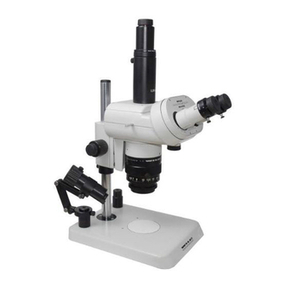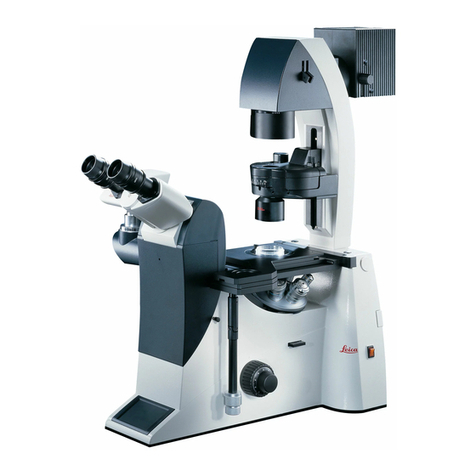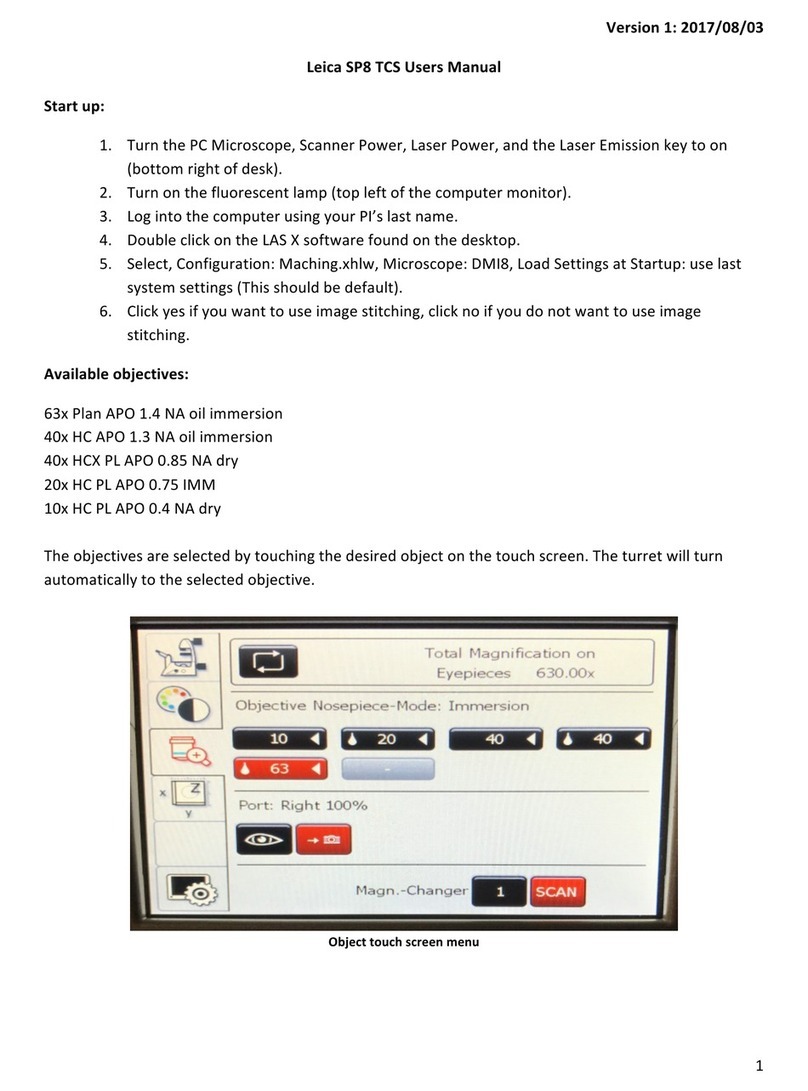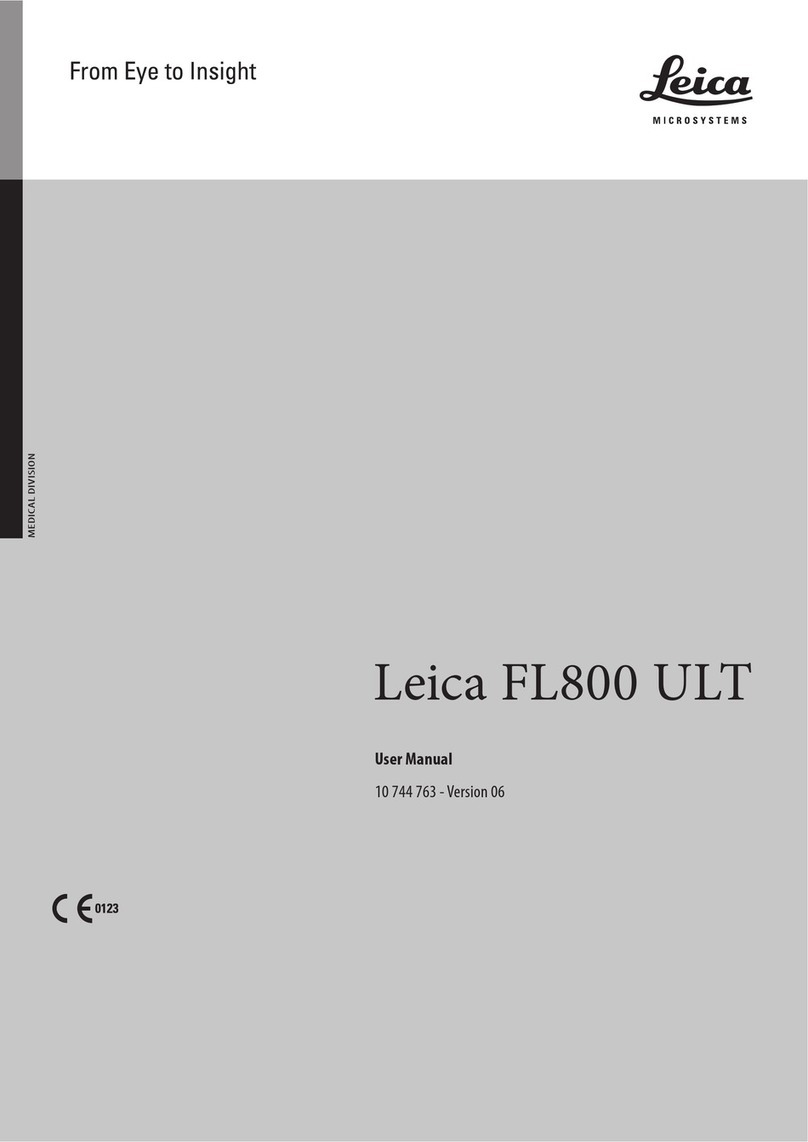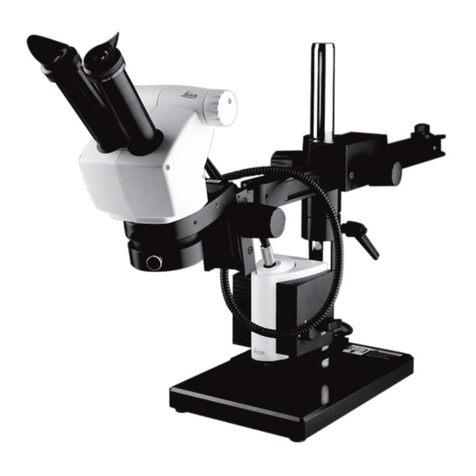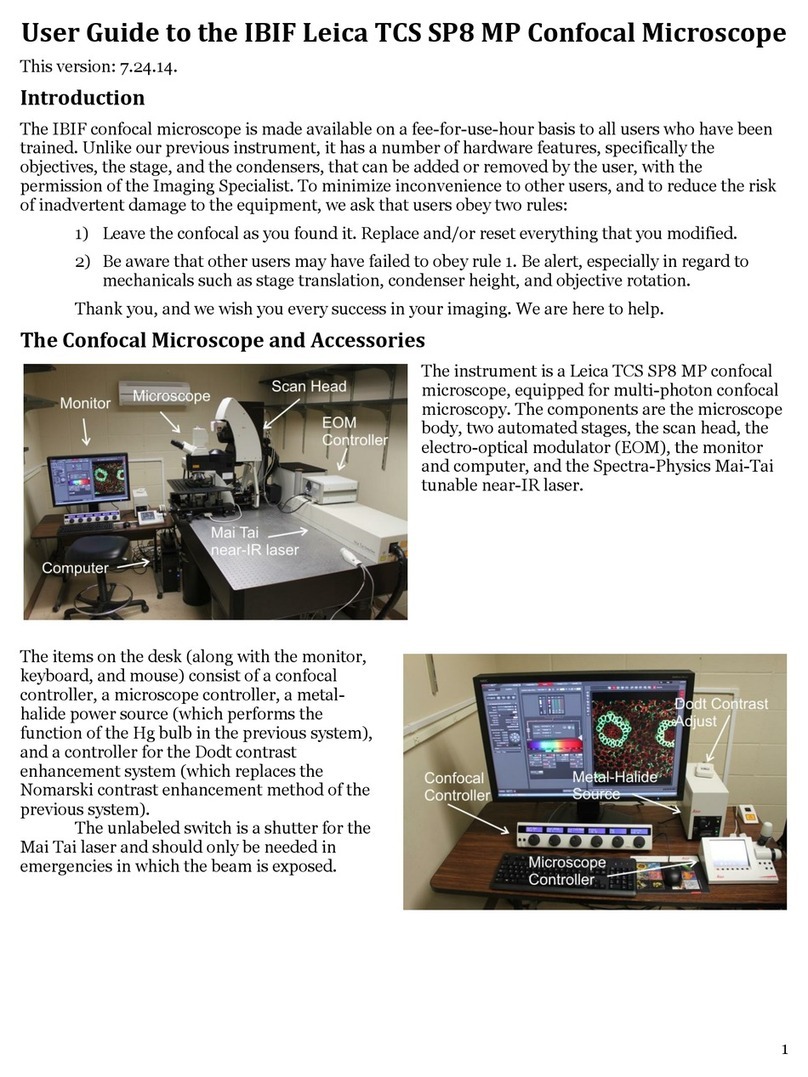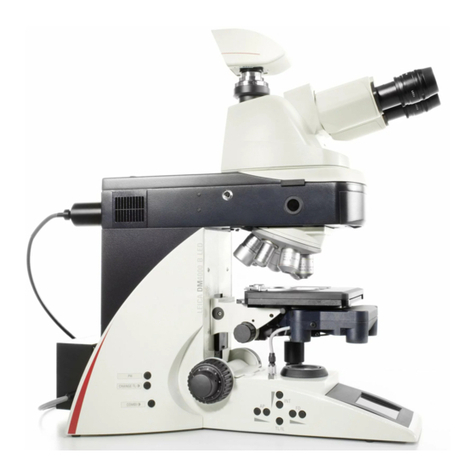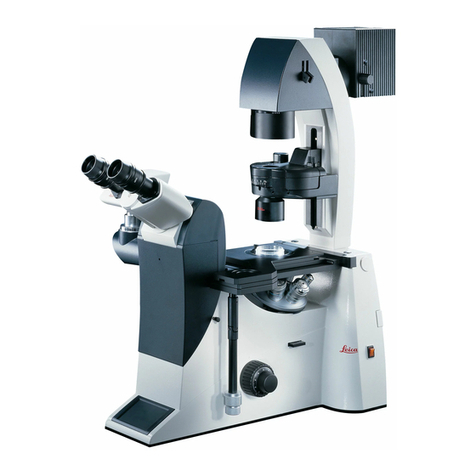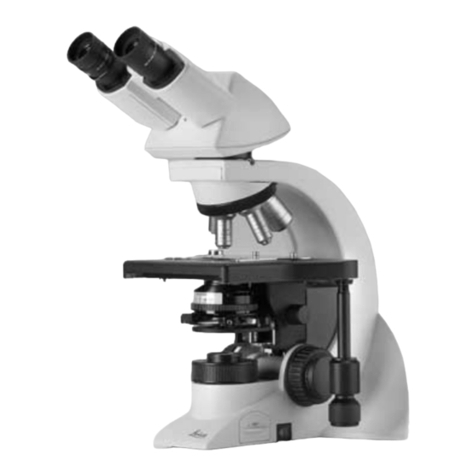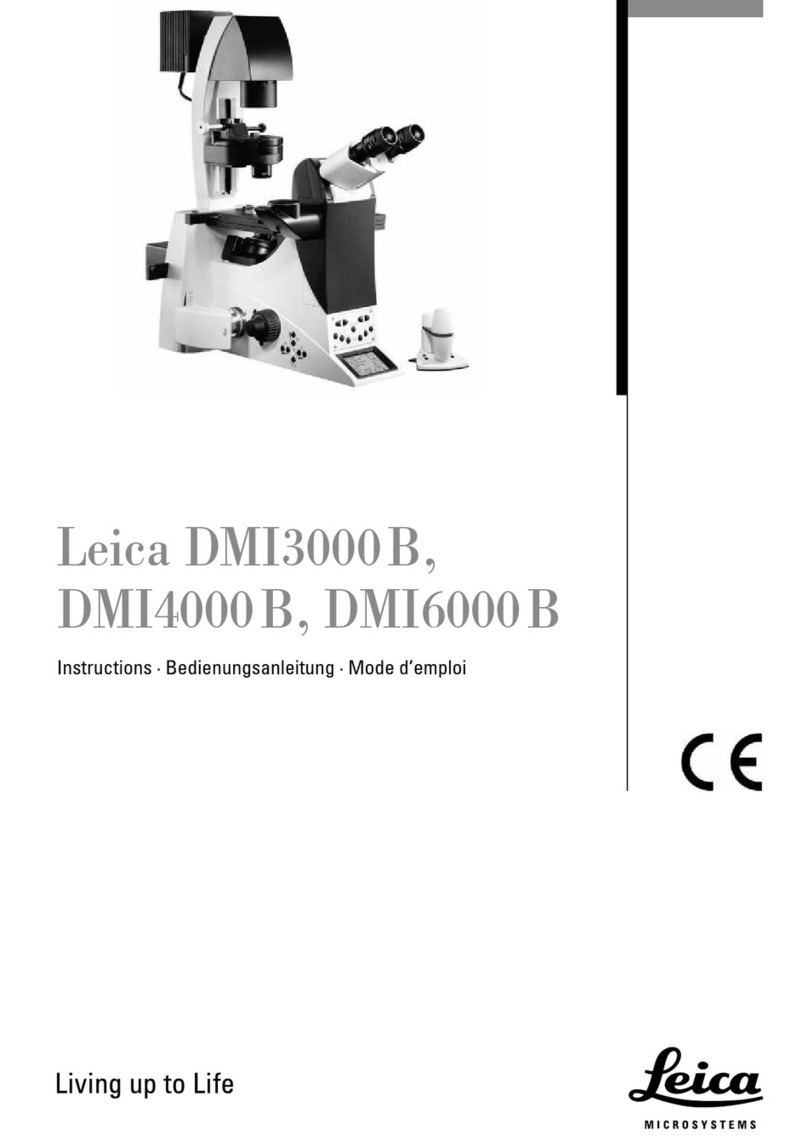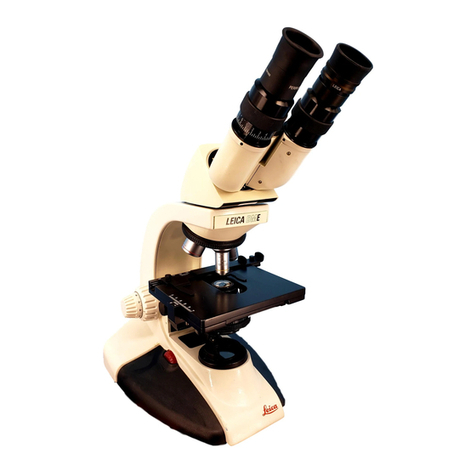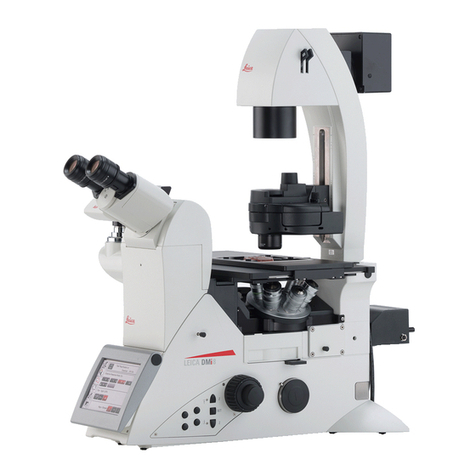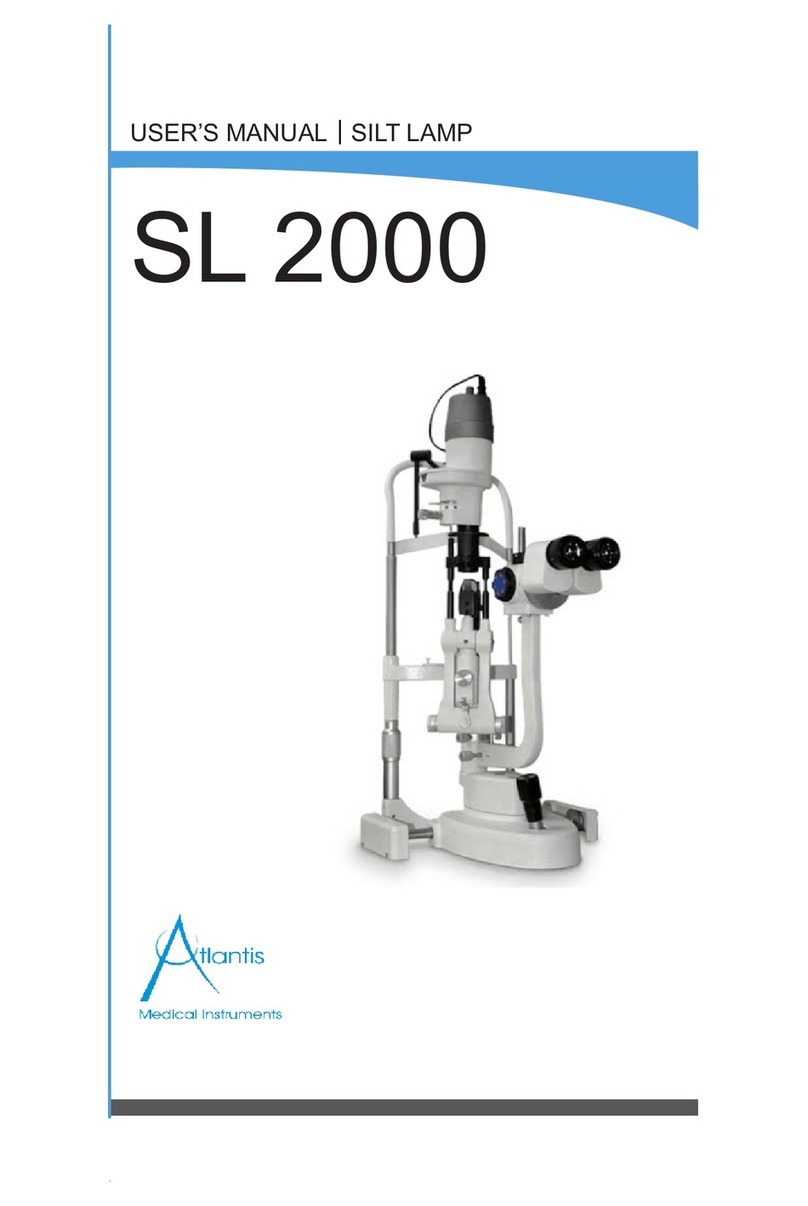6
General directions Read
the
user
manual
and
safety
instructions
before
starting
up
.
Permitted uses
The
Leica MS5,
MZ6,
MZ7
s, MZ9
s,
MZ12
s.
MZ16
and MZ16 A stereomicro-
scopes are optical instruments which
use
magnification for improved
visual
iza
ti
on
of objects, their details
and
specimens from technology and
natural sciences.
The
basic outfit, which includes a stand and a light
source, can
be
supplemented w
it
h vario
us
modules for photography,
TV
,
dual station viewing
and
other applications.
Prohibited • The use of the instrument in a different manner from
that
de
sc
ribed
in
uses this user manual can lead to injury, malfunction
and
damage.
• The Leica MS5, MZ6, MZ7s, MZ9s,
MZ12
s,
MZ16
and
MZ16 A stereo-
microscopes must not
be
used for
eye
examinations
and
operations.
•
Do
not fit different plugs.
Do
not dismantle optical systems or mechani-
cal parts unless instructions for doing
so
are given
in
the user manual.
Place • The Leica
MS5
,
MZ6,
MZ7s, MZ9s, MZ12
s.
MZ16
and
MZ16 A stereo-
of use microscopes are intended
ma
inly for indoor
use
.
•
If
the stereomicroscope
is
used outdoors, protect
it
from dirt
and
mois-
ture. Lamps
and
electrically-operated stands from Leica may not
be
used outdoors.
Use in
ESD
The
optics carriers
MS5
, MZ6, MZ7s, MZ9s, MZ12s, MZ16
and
MZ16
A,
the
protected rooms binocular tube, Ergo
Tube™,
ErgoWedge™ 5
°-
25°,
the swinging-arm
stand
ESD
and
the cold light sources Leica
L2
and
CLS
consist of
ESD-
discharging material (surface resistance <
10
" ohms/squared, discharge
t1me
<2 seconds,
1,000
Vto
100
V).
Servicing
Responsibilities
of person in charge
of instrument
- A connection socket for a 0 4
mm
grounding cable
is
provided
on
the
microscope carrier.
-There are
two
connection sockets for 0 4
mm
grounding cables
in
the
base of the swinging-arm stand.
Repairs may
on
ly
be
carried out by Leica-trained service technicians.
Only original Leica spare parts may
be
used.
• Ensure that personnel who use the instrument have read
and
under-
stood this user manual and in particular the safety instructi
ons.
• Ensure
thatthe
Leica MS5, MZ6,
MZ7
s, MZ9s,
MZ12s
, MZ16
and
MZ16
A
stereomicroscopes are operated, maintained
and
repaired
on
ly
by
authorized
and
trained personnel.
Leica
M Stereomicroscopes -
Safety
concept
Safety
rf'g;ulations
Workplaces with stereomicroscopes facilitate
and
improve the
viewing task, but they also impose high demands
on
the eyes
and holding muscles of the user. Dependent upon the duration
of uninterrupted activity, this may lead to asthenic trouble
and
muscular-skeletal pain
so
that
suitable measures must
be
taken
to reduce the strain:
-perfect design of workplace (see p.
14).
work content and
work process (frequently changing activities).
-detailed introduction ofthe personnel while considering
ergonomic
and
organizational work-related aspects.
The
ergonomic optics concept
and
the design
ofthe
Leica M
series
aim
at limiting the strain
on
the user to the lowest possi-
ble level.
Direct contact with eyepieces can
be
a potential transmission
path for bacterial
and
viral infections of the
eye.
Users should
be
made aware ofthe potential risk of infection.
The
risk can
be
kept at a minimum
by
using individ
ua
l eyepieces or attachable
eyecups (see
p.16)
.
Electrically-operated
items
The safety regulations listed below apply to the following items:
-Transmitted-light stand, bright field,
20
W (page
24)
-Supply (line) lamp
25
W (page
47)
-Regulating transformer 0- 7
V/40
W (page
38)
-Step transformer 4/
5/6
V (page
39)
-
Motor
focus (separate instructions)
-Motori
zed
Leica
MZ16
A
Liquids
Be
careful when handling liquids.
If spilt
on
the equipment, they can:
-cause the stereomicroscopes
and
accessories to become
electrically live, endangering personnel,
-cause damage to the equipment.
Power cables Inspect cables regularly for damage. Defective cables can:
-directly endanger personnel,
-cause the stereomicroscopes
and
accessories to become
electrically live, endangering personnel.
Leica
M Stereomicroscopes -
Safety
regulations 7
